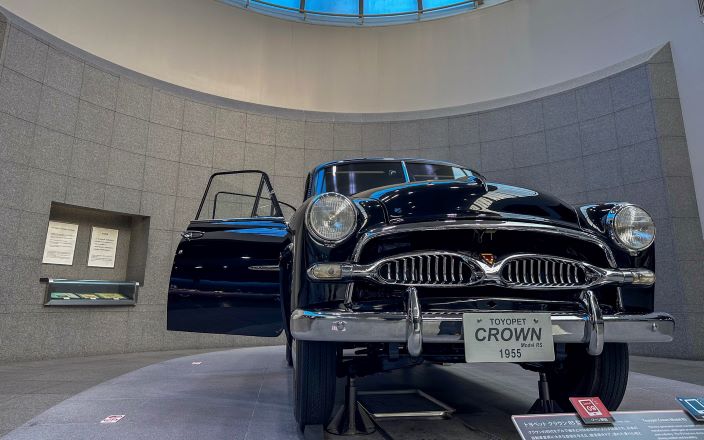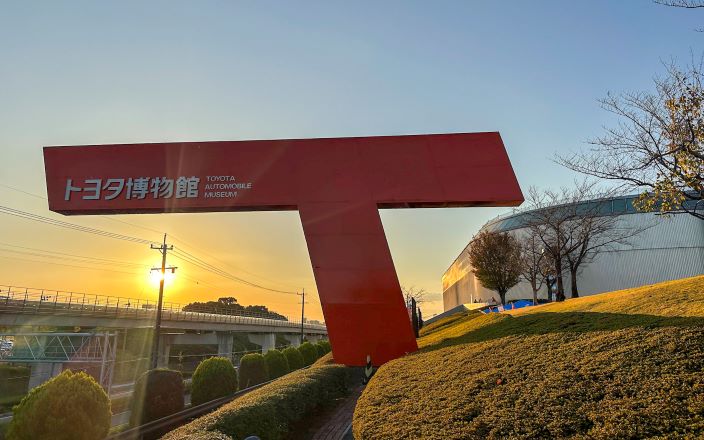Toyota, Japan’s world-class automaker, is an indispensable player in the global automotive industry, with record annual production in 2023 and a global automotive market share of more than 10% in 2023.
The Toyota Automobile Museum in Nagakute City, Aichi Prefecture, was established in April 1989 as one of the commemorative projects for Toyota Motor Corporation’s 50th anniversary. Although the museum is called the “Toyota” Museum, it is not only a facility to learn about the history of Toyota Motor Corporation, but also a museum that traces the evolution and culture of cars around the world.
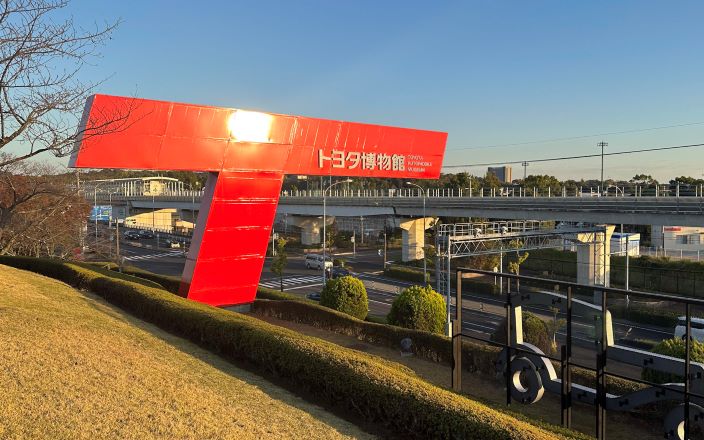
- Access
- Automobile Gallery
- Symbol Zone
- ZONE 1 1890-1910s The Dawn of the Automobile
- ZONE 2 1910s Rapid Advancement of the Automobile
- ZONE 3 1910-1930s Widespread Acceptance of the Automobile
- ZONE 4 1920-1930s A Pageant of Luxurious Saloons
- ZONE 5 1920-1940s The Dawn of Japanese Mass Production
- ZONE 6 1930s The Age of Streamline Design
- ZONE 7 1930-1940s The Blossoming Diversity of Automotive Culture
- ZONE 8 1930-1950s Turning a New Leaf after World WarⅡ
- ZONE 9 1950s Re-ignition of American, European, and Japanese Car Industries
- ZONE 10 1960s Economic Growth & Expansion of Motorization
- ZONE 11 1970s A Trying Time / Surfacing of social issues
- ZONE 12 1980s The Birth of New Vehicle Types
- ZONE 13 20XXs Toward a Sustainable Future
Access
It takes 30 minutes from Nagoya Station by expressway. Free parking for 320 passenger vehicles is available. The facility is also easy to reach by public transportation, a 5-minute walk from Geidai-dori Station (in front of the Toyota Museum) on the Linimo (Tobu Kyuryo Line). Incidentally, it is also close to Ghibli Park, only two stops away by Linimo!
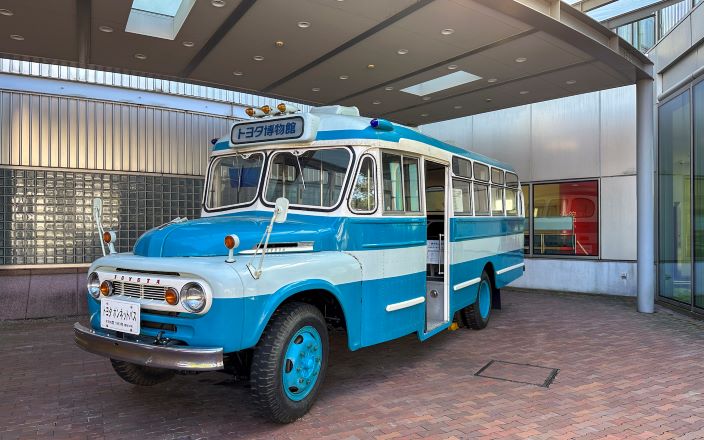
The Toyota Automobile Museum consists of two buildings, the Automobile Gallery and the Cultural Gallery. In this post, we are introducing the Automobile Gallery.
Automobile Gallery
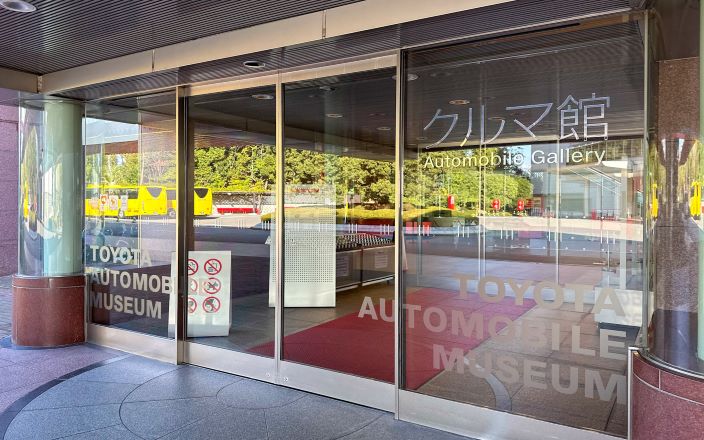
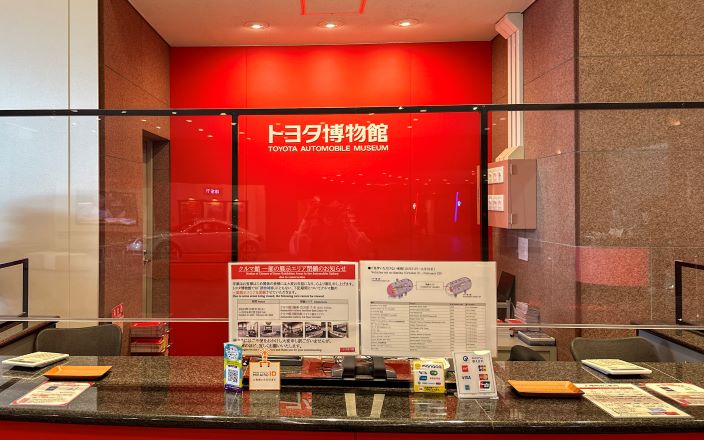
Symbol Zone
The first car that greets you is the Toyoda Model AA (1936 replica) in the “Symbol Zone” on the first floor. It was the first passenger car built by Toyota Motor Corporation, and although it has been over 80 years since it was built, it is a very popular car in this museum.
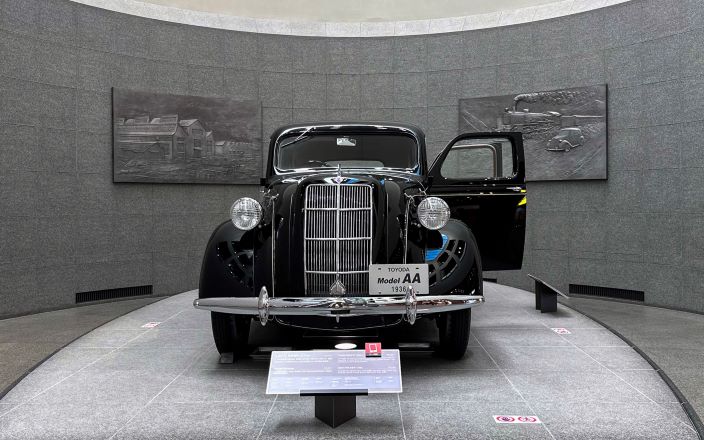
The second and third floors are used to systematically display automobiles from the dawn of time to the present day. The most wonderful thing about the Toyota Museum is that all 140 classic cars are dynamically preserved. Of course, the cars are not moving in the exhibition halls, but isn’t it exciting to think that cars more than 100 years old can still be driven? Also, because of the epoch-making cars on display, visitors can learn about the history of the automobile and the culture of the time.
ZONE 1 1890-1910s The Dawn of the Automobile
The “automobile” was invented in 1769 as a vehicle to replace the horseless carriages. The “steam car,” which ran on steam power, was born, followed by the “electric car. In fact, the gasoline-powered automobile, with which we are all familiar, was born in 1886 and was the last in line for power in automobile development. However, gasoline-powered cars quickly became the mainstay of automobile production due to their rapid performance improvements. This zone introduces the early days of the gasoline-powered automobile.
Although the car has changed from human power (horse power?) to gasoline-power, it still looks like a horseless carriages . What kind of transition took place from here to the modern automobile?
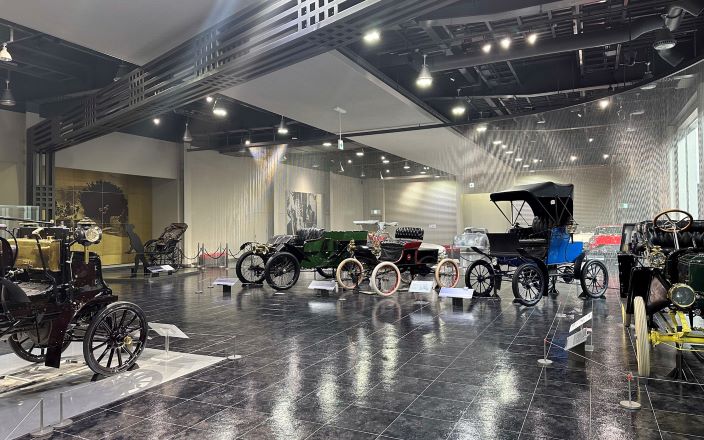
ZONE 2 1910s Rapid Advancement of the Automobile
The rapid development of technology has led to dramatic improvements in performance and changes in design. The car was not yet a vehicle for the masses, but rather a tool of taste and pleasure for royalty, aristocrats, and other wealthy individuals. The Rolls-Royce “Silver Ghost” was a very special car even in those days.
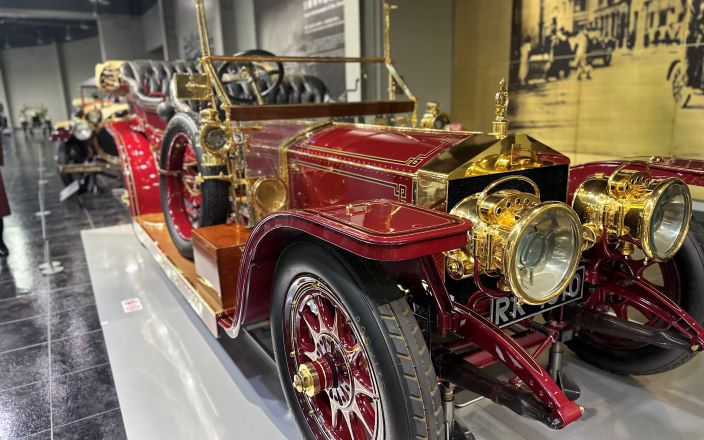
ZONE 3 1910-1930s Widespread Acceptance of the Automobile
However, only luxury cars like the Silver Ghost are not mobility for the masses. This is where the “Ford Model T,” which was introduced in 1908, came in. While other cars were priced at around $2,000, the Model T was sold for $850, an unbelievable price at the time, and became a hit for the masses.
Also introduced in 1912, the “Cadillac Model Thirty” was the first car with a self-starter motor, making it easy for women and older people to drive. This rapidly sparked motorization.
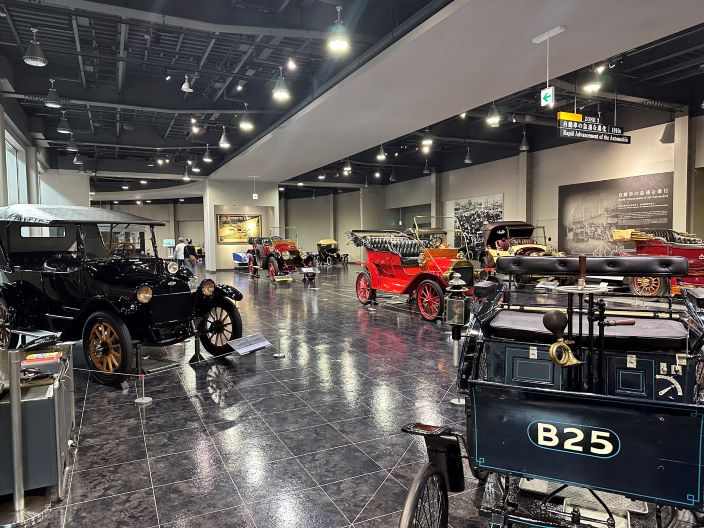
ZONE 4 1920-1930s A Pageant of Luxurious Saloons
In the 1920s, engine technology refined through the development of aircraft was brought to the automobile and entered a period of rapid development. Luxury and high-performance cars developed by European and American automakers competed with each other, captivating people with their beauty of form and advanced technology.
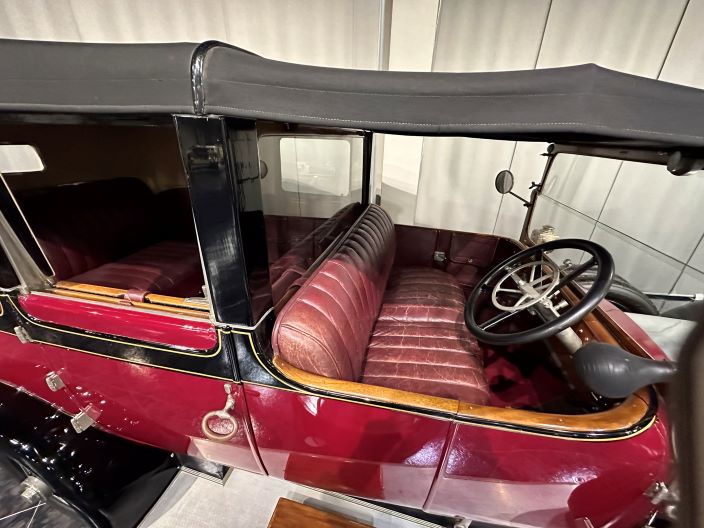
The creation of cars of various performance levels also led to competitions for their speed, and by the early 1900s, international races were born. Because the races were fought for national prestige, racing cars were often painted in national colors.
ZONE 5 1920-1940s The Dawn of Japanese Mass Production
The Model T Ford-based buses, hastily imported from the U.S., replaced Tokyo’s public transportation system, which was destroyed in the Great Kanto Earthquake of 1923, and served as a major means of transportation for citizens. This was the beginning of the spread of automobiles in Japan.
Subsequently, mass production of small cars that did not compete with foreign cars began in Japan, with Datsun (today’s Nissan) achieving some success. In addition, Nissan, Toyoda Automatic Loom Works (today’s Toyota), and Isuzu Motors took on the challenge of full-scale automobile production, partly due to the Japanese government’s efforts to foster automobile manufacturers.
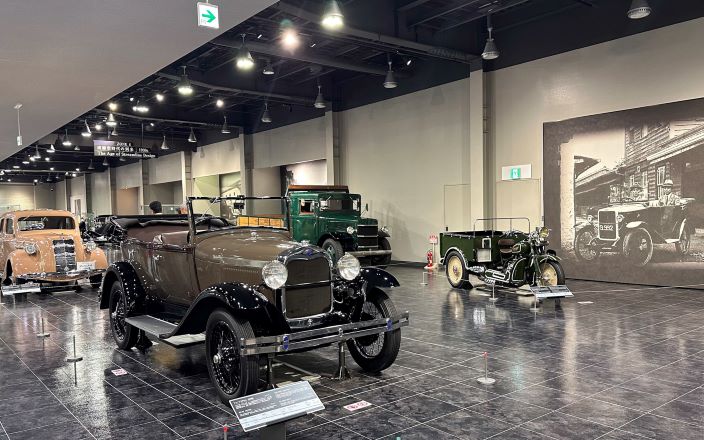
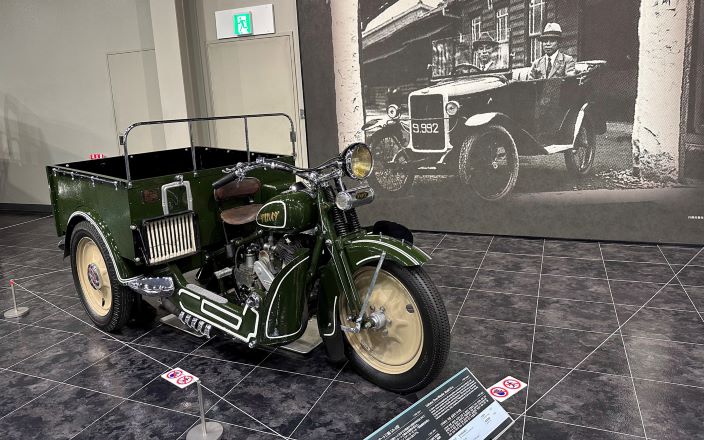
ZONE 6 1930s The Age of Streamline Design
In the 1930s, the streamlined shape of airplanes was finally incorporated into cars. Toyota’s first production passenger car, the Toyoda Model AA, displayed in the Symbol Zone, was modeled after the American streamlined model. These two cars are displayed side by side at the Toyota Museum, so it is interesting to compare them.
It was also around this time that the Art Deco Exposition held in Paris, France, in 1925 led to the adoption of design styles for cosmetics and clothing.
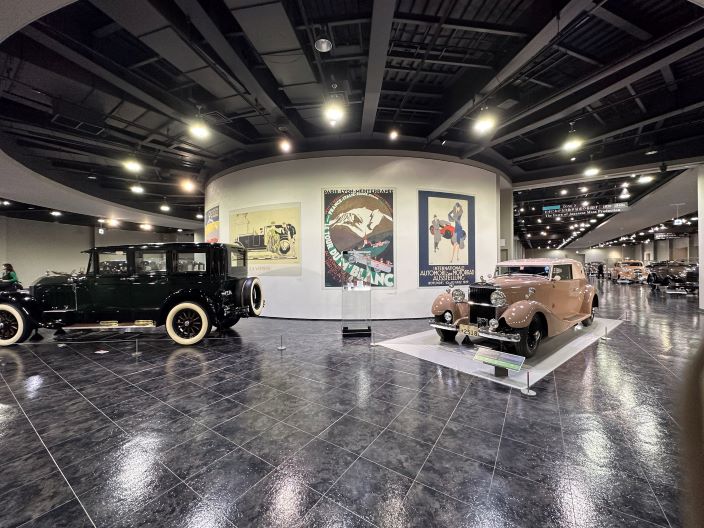
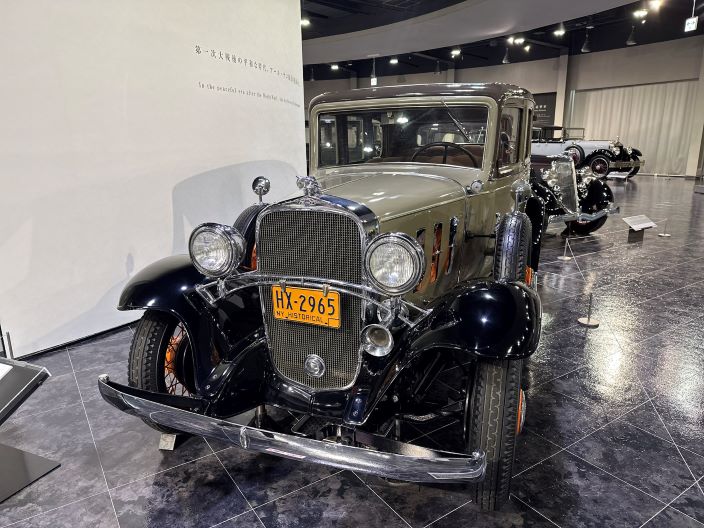
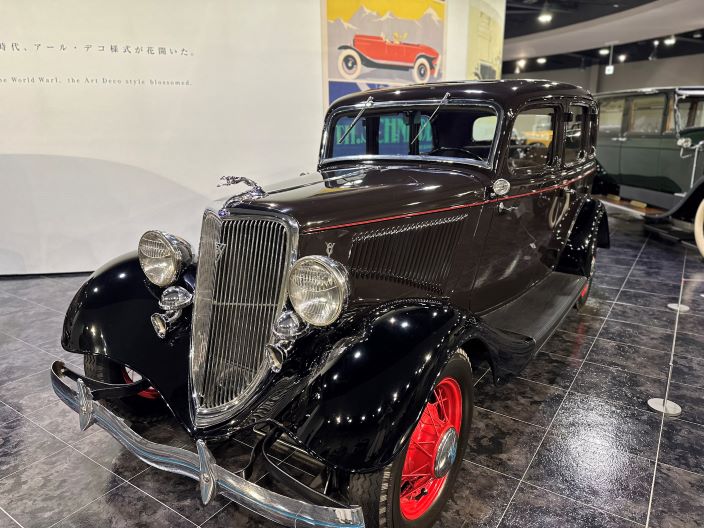
ZONE 7 1930-1940s The Blossoming Diversity of Automotive Culture
Countries in Europe and the United States have created many unique and high-performance automobiles tailored to their respective countries. Cars custom-made by the wealthy are now a craft.
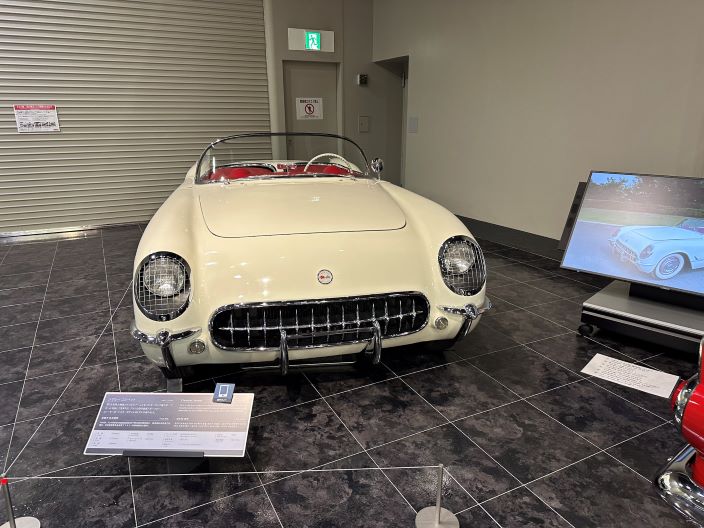
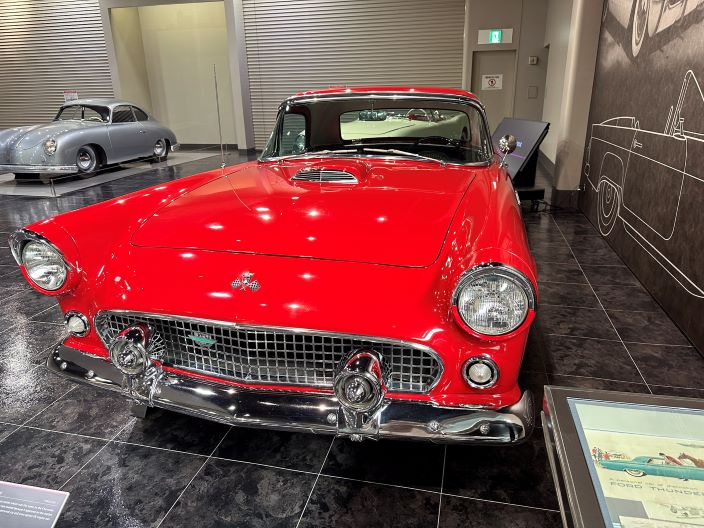
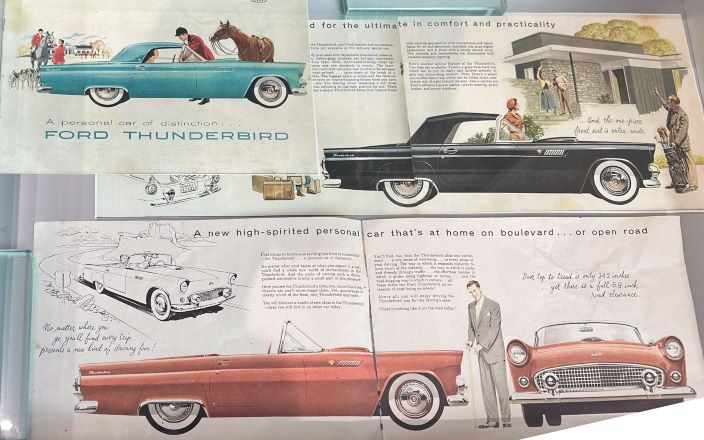
ZONE 8 1930-1950s Turning a New Leaf after World WarⅡ
After the end of WWII, Tucker and other upstart companies entered into auto manufacturing, using idle arms factories to produce uniquely designed cars. The postwar models of the BIG3 (GM, Chrysler, and Ford) included innovative designs such as tail fins designed after airplanes. In Europe, too, new car manufacturers began to take up the challenge of producing automobiles.
ZONE 9 1950s Re-ignition of American, European, and Japanese Car Industries
Japan is a small country and has no oil or natural resources, so small cars must be fuel-efficient. It was in the 1950s that manufacturers engaged in friendly competition to find a car that suited Japan’s social conditions.
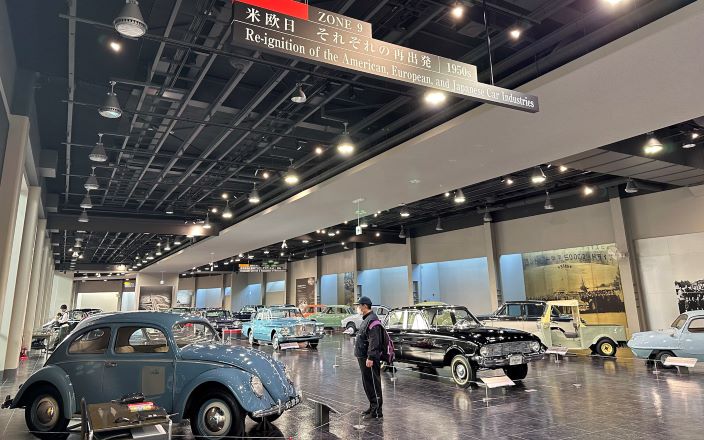
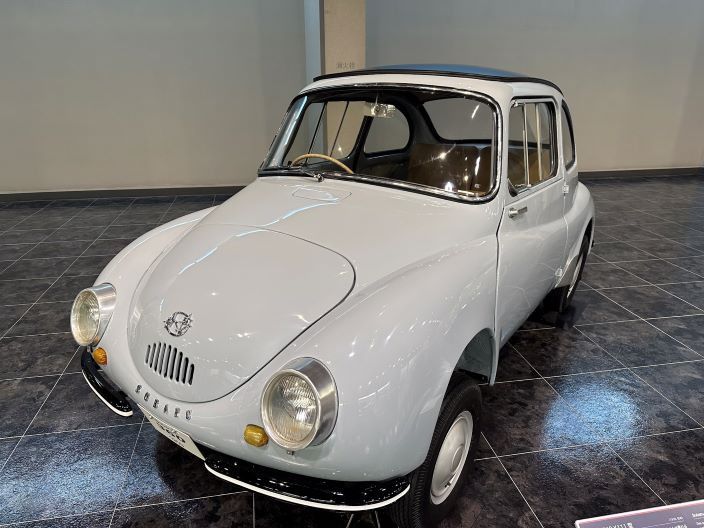
The “first generation Crown” is displayed as the symbolic car on the third floor. This was the first car exported to the U.S. by Toyota Motor Corporation, but it ended in failure.
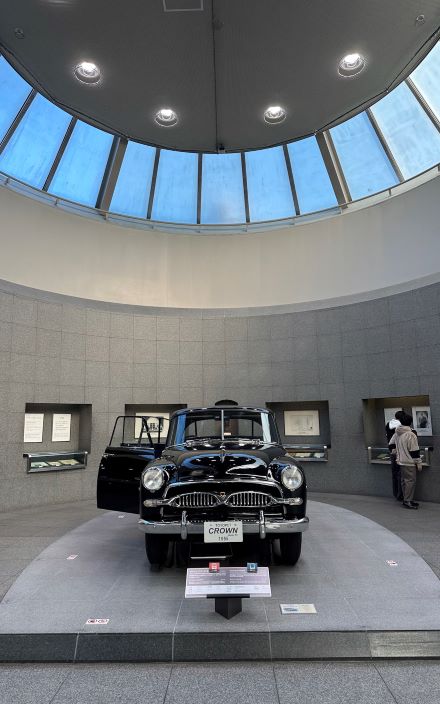
On the other hand, in the U.S., unlike Japan, large cars were popular because of the country’s large land area, crude oil, and natural resources.
The pinnacle car of America at that time was the “Cadillac,” which was also chosen as the exclusive car of successive presidents. With its large displacement, radio, and large tail fins, it symbolized the affluence and freedom of the era.
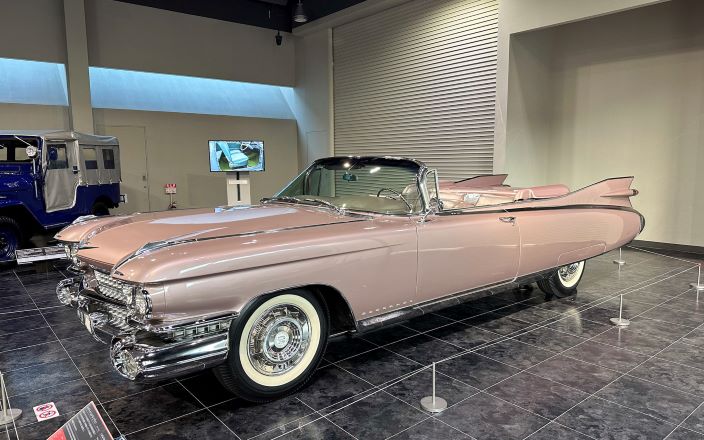
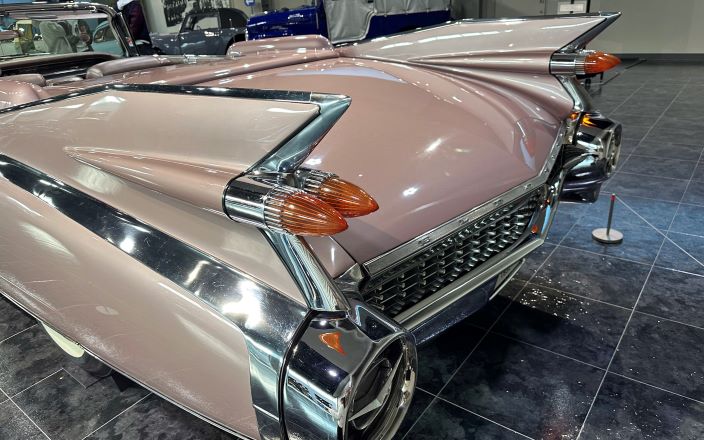
In Europe, compact cars were widely manufactured, as many countries have small land areas.
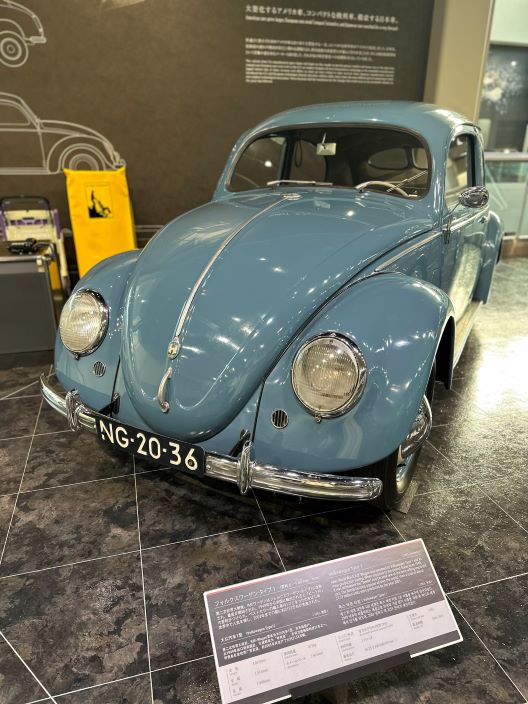
ZONE 10 1960s Economic Growth & Expansion of Motorization
In the 1960s, the era in which the average Japanese citizen had his or her own car finally arrived due to the improvement of living standards.
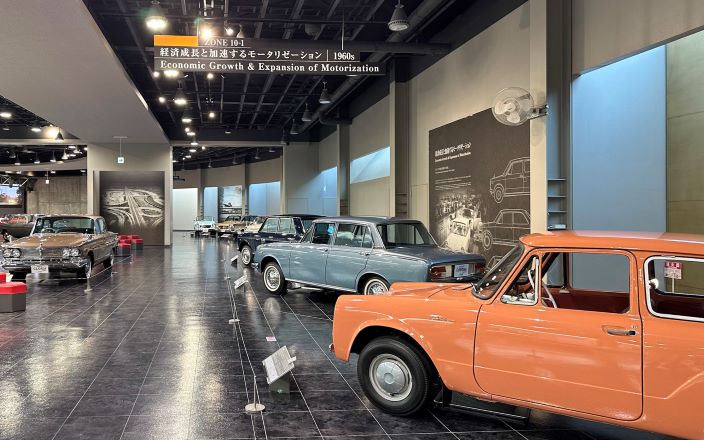
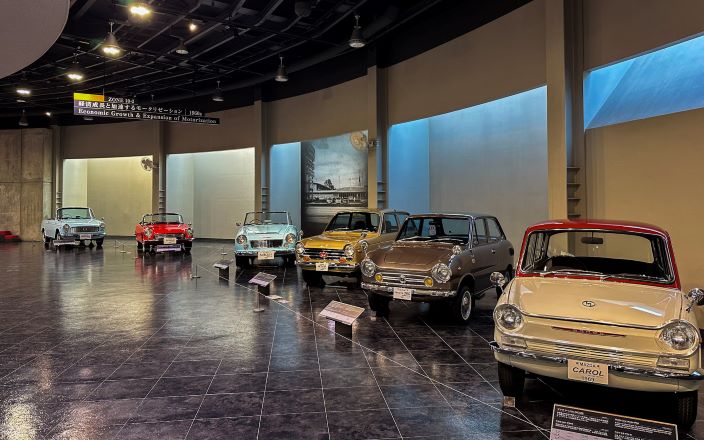
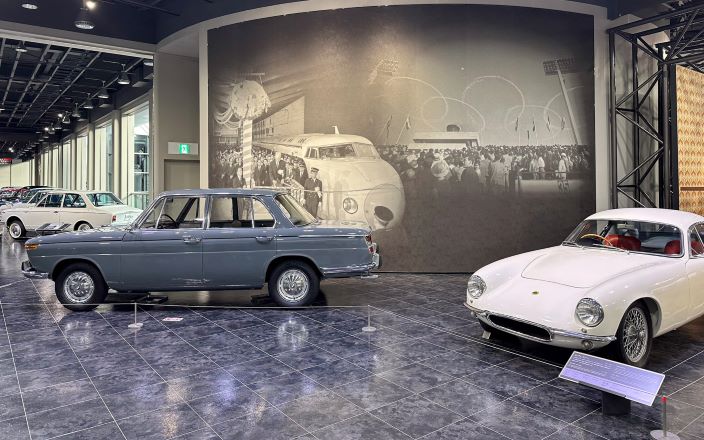
With the construction of the Tomei Expressway, Meishin Expressway, and Suzuka Circuit, domestic manufacturers tried their hand at producing sports cars. The popular Toyota Sports 800 and the Toyota 2000GT, the princess of the Toyota Museum, are displayed on a raised platform.
The “Toyota 2000GT” is Japan’s first full-scale Gran Turismo car, and is a remarkable automobile in terms of design, with a long nose and short deck for easy daily use.
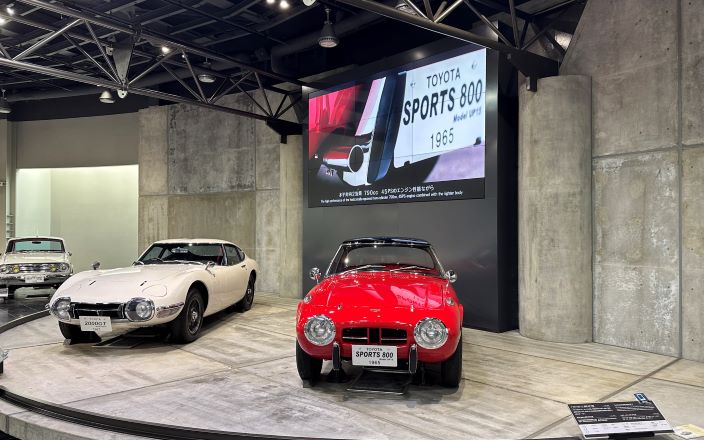
ZONE 11 1970s A Trying Time / Surfacing of social issues
The 1970s were a difficult time for the automobile industry, as strict emission regulations were enacted in the United States in 1970. The Honda Civic was the first car to comply with the U.S. regulations.
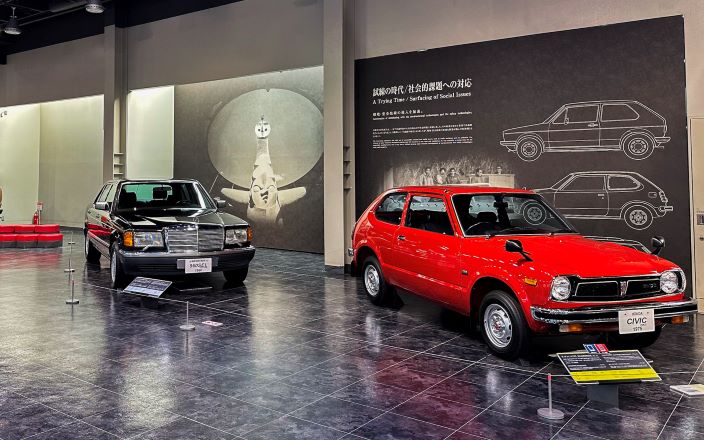
ZONE 12 1980s The Birth of New Vehicle Types
In the 1980s, Japanese cars took off around the world as a brand. Diversification of lifestyles led to the birth of various types of vehicles such as SUVs and minivans.
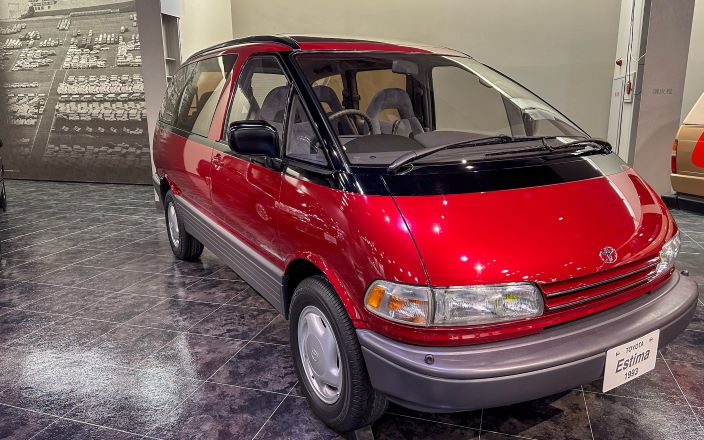
ZONE 13 20XXs Toward a Sustainable Future
And now. Just as in the early days of the automobile, we are now exploring various types of power sources, such as hybrids, electric vehicles, and fuel vehicles, with the aim of achieving a sustainable society. What is the future of the automobile?
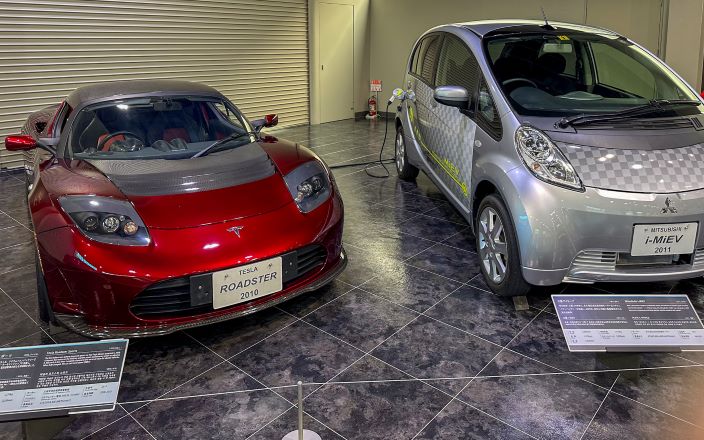
Japanese History of Car Making
The ” Japanese History of Car Making,” a permanent exhibit on the second floor of the Automotive Pavilion, introduces the history of the Japanese automobile industry. Visitors can compare Yoshisuke Ayukawa, founder of Nissan Motor Company, and Kiichiro Toyoda, founder of Toyota Motor Company, and learn about major topics in the Japanese automobile industry in the “Moving Timeline”.
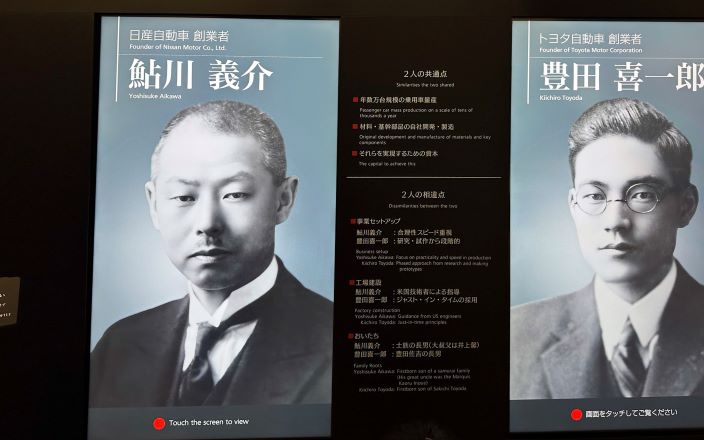
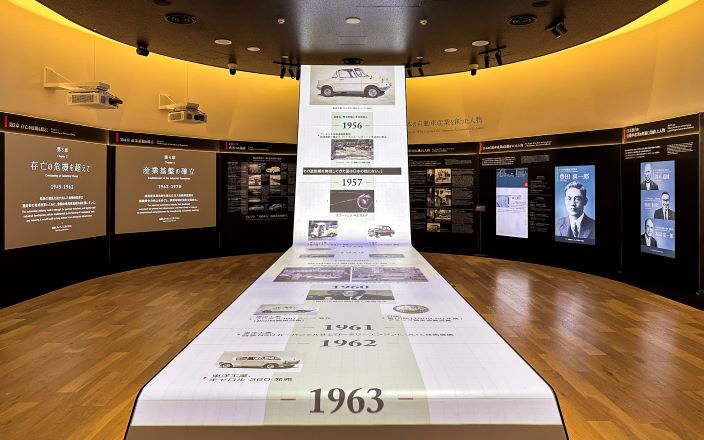
The “Automobile Gallery” is so extensive that no amount of time would be enough to spend on each and every car, but the Toyota Museum does not stop there. In the next post, we will introduce you to the “Cultural Gallery”.
Toyota Automobile Museum
| Address | 41-100 Yokomichi, Nagakute City, Aichi Prefecture 480-1118, Japan |
| TEL | (+81) 561-63-5151 |
| Open Hours | 9:30-17:00 (Last admission is at 16:30.) |
| Close | Monday (or Tuesday when Monday falls on a public holiday), the Year-end and New Year holidays |
| Admission Fee | 【Adults (ages 18+)】¥1,200 【Seniors (ages 65+)】¥700 【Junior high and high school students】¥600 【Elementary school students】¥400 *** Admission is free for preschool children. |
| Website | https://toyota-automobile-museum.jp/en/ |

